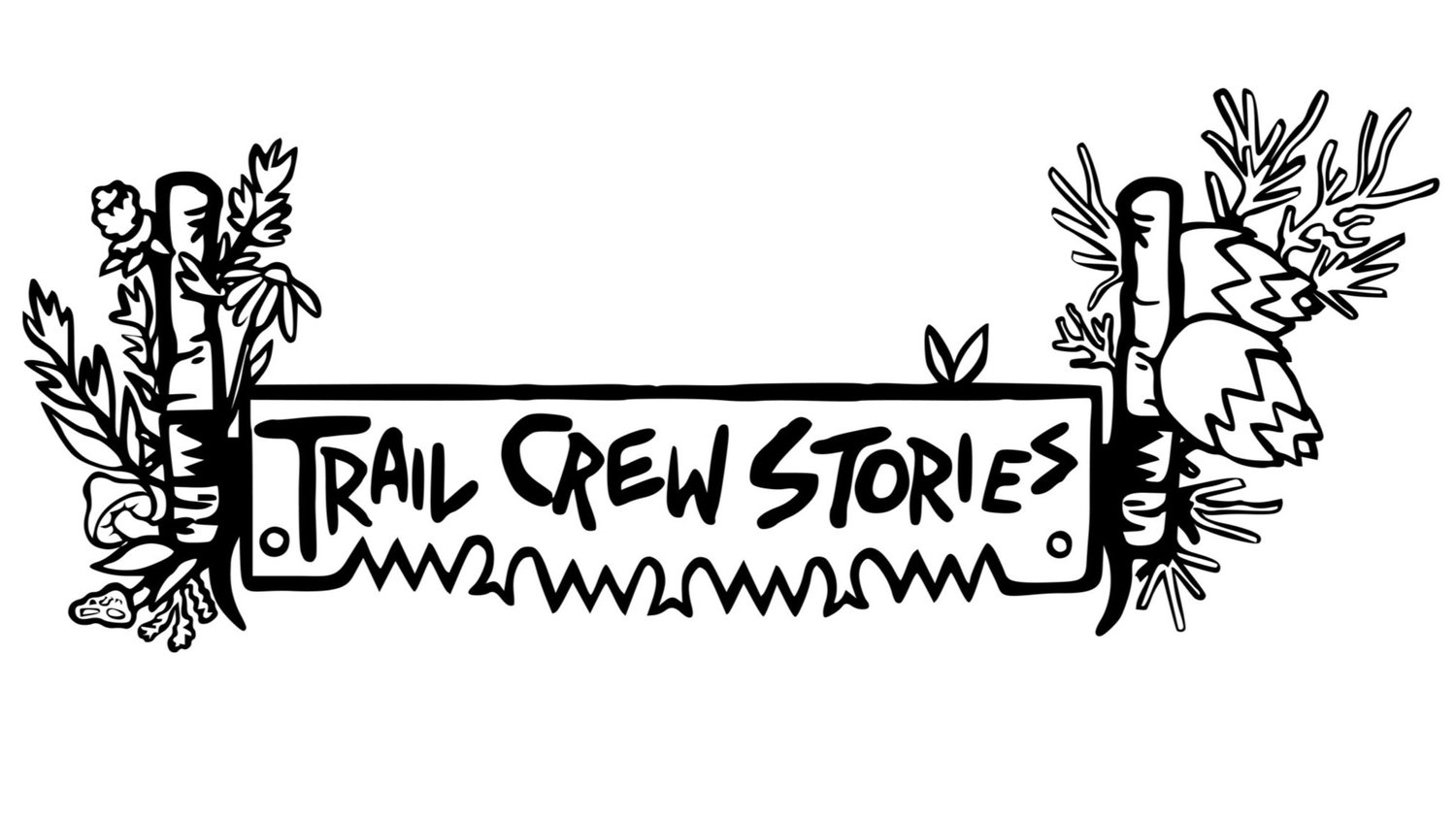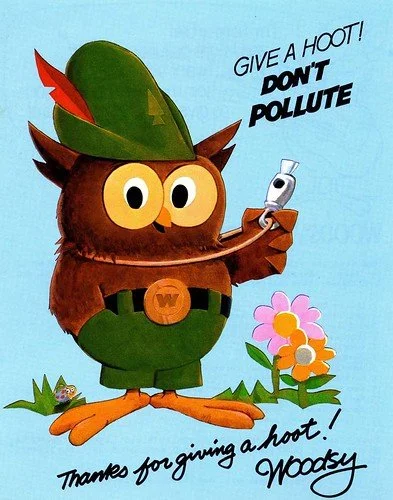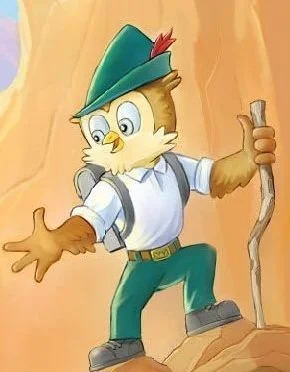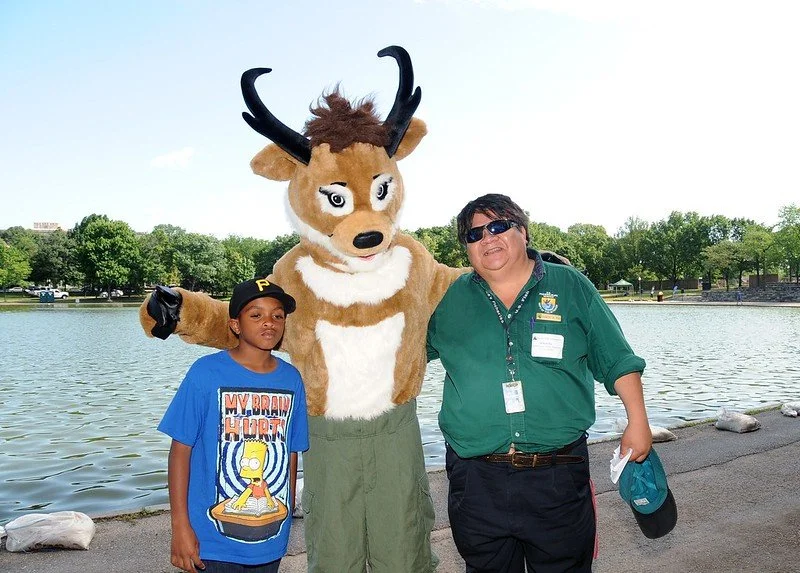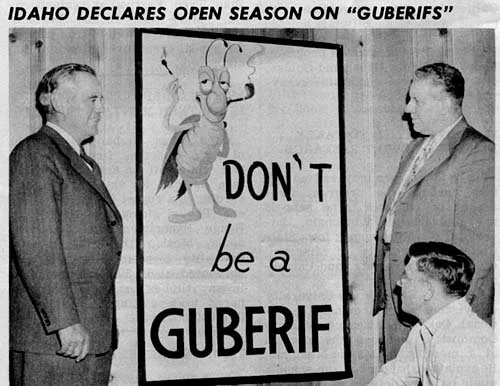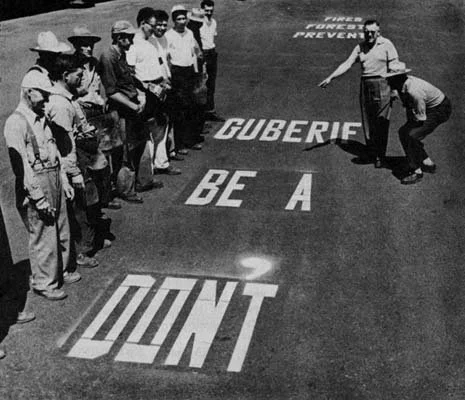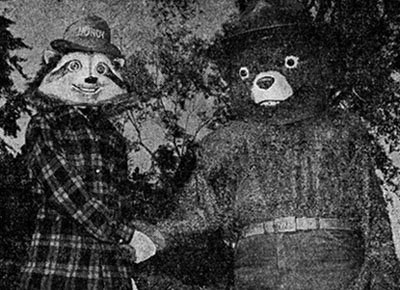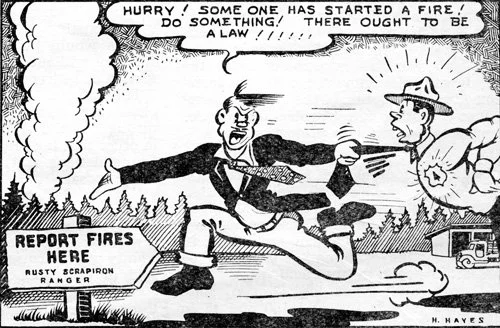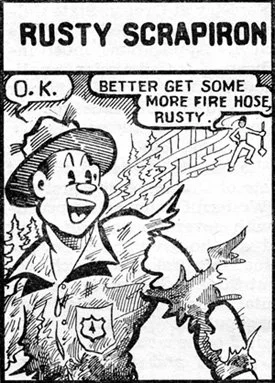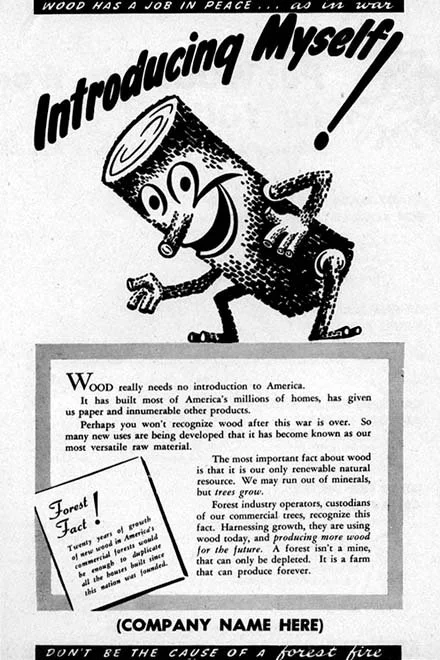Smokey’s Lost Brethren: Obscure and Forgotten Mascots of Land Management
One character in particular has utterly dominated pop culture in conservation: Smokey Bear. Smokey Bear (often incorrectly called Smokey the Bear) was created in 1944 by the US Forest Service and the Ad Council to generate PSAs about the dangers of forest fire. Eighty years later, Smokey is the longest–running PSA campaign in US history, appearing on billboards, merchandise, and in costume. At the time of this writing, Smokey has 81,700 followers on Instagram and 72,600 followers on X (fka Twitter). During the Trump presidency, Smokey began appearing on bootleg merchandise with slogans such as “Resist” and “Only YOU Can Prevent Fascist Liars.”
Smokey is an icon, but also an outlier. He was created during a proliferation of government and industry-sponsored mascots, most of which have faded into obscurity or sputtered into modernity. These PSA figureheads surged during World War 2 to (attempt to) educate and manage public actions while people and resources were being directed to war mobilization. Some were created by the federal government, others by non-profit advocacy groups, and many by for-profit industry groups. While anthropomorphized, they are, conspicuously, all male.
What follows is a roster of a few of Smokey’s lesser-known and forgotten brethren.
Woodsy Owl
Creator: US Forest Service
Years Active: 1971-Present
Labeling Woodsy Owl as “obscure” might offend the Forest Service, who continue to trot out Woodsy as an educational mascot for the agency. But relative to Smokey, Woodsy (with a mere 3,650 followers on Instagram, if that is a measure of popularity) is relatively unknown. Woodsy’s original catchphrase, “Give a hoot! Don’t Pollute!” has been officially updated to “Lend a hand– care for the land,” an update which seems to neglect the fact that owls don’t have hands.
For the Woodsy fans out there, be sure to check out this collection of animated PSA’s from 1965-1985.
Image source: USDA
The Forest Service calls today’s Woodsy Owl “lean, athletic, and safely geared to enjoy the outdoors.”
Image source: USDA
Johnny Horizon
Creator: Bureau of Land Management
Years Active: 1968-1977
Johnny Horizon was created by the BLM as the “symbol of the thoughtful outdoorsman.” Broad-shouldered, square-jawed, striding forward, Johnny Horizon wielded his hyper-masculine energy to demand that Americans “Keep it Clean!” on their public lands. The Johnny Horizon campaign was remarkably successful; folk singer Burl Ives recorded an album of Johnny Horizon PSAs; Johnny Horizon appeared in many pop culture outlets including Charles’ Schultz’ “Peanuts”; tens of thousands signed his pledge; and Parker Games sold “Johnny Horizon Environmental Test Kits” for kids. Despite his success, Johnny Horizon was phased out around 1977 for reasons that aren’t entirely clear.
Image source: Forest History Society
Image source: Forest History Society
Seymour Antelope
Creator: Bureau of Land Management
Years Active: 2010-Present
Seymour Antelope is a binocular-wielding ungulate who came on the scene in 2008 for the BLM in New Mexico and in 2010 was adopted as a national mascot for the BLM. He has since become the face of youth programs for the agency, and represents a pivot towards more environmental messaging as the BLM pursues more conservation objectives.
Image source: USFWS
Image source: BLM
Guberif
Creator: Keep Idaho Green
Years Active: 1950s
Guberif was the creation of the state of Idaho for a “Keep Green” campaign, which aimed to educate the public on wildfire prevention. The Guberif (conspicuously “firebug,” written backwards) is a droopy-eyed pest who wreaks havoc on western forests by causing wildfires, often from a lit cigarette. In 1951, the words “Don’t Be a Guberif” was painted 300 times across highways in Idaho, but only a handful of these original signs remain.
Image source: Forest History Society
Image source: Forest History Society
Image source: Forest History Society
Howdy the Good Outdoor Manners Raccoon
Creator: Pennsylvania Forestry Association
Years Active: 1959-1970s
Howdy the Good Outdoor Manners Raccoon was created in 1959 as the mascot for an anti-littering campaign by the Pennsylvania Forestry Association. Although Howdy’s popularity fizzled in Pennsylvania, his image was adopted on the West Coast by the Good Outdoor Manners Association (GOMA), an anti-litter advocacy group. GOMA gave him a boost through the 1960s, but Howdy had begun to say goodbye to the public by the late 1970s.
Image source: Forest History Society
Nightmare fuel: Howdy meets Smokey
Image source: Forest History Society
Rusty Scrapiron
Creator: Keep Oregon Green
Years Active: 1950-1952
Rusty Scrapiron is a fictional park ranger and fire warden who was created as part of Oregon’s “Keep Green” campaign by cartoonist Hugh Hayes. Rusty appeared in a namesake comic strip from 1950-1952 as a Popeye-esque character who fought wildfires, chased down careless smokers, and even walloped forest visitors who started fires.
First appearance of Rusty Scrapiron in 1950.
Image source: Forest History Society.
Image source: Forest History Society.
Woody the Log
Creator: American Forest Products Industries
Years Active: 1944-1960s
Woody the Log was created by American Forest Products Industries as a mascot to improve public perceptions of the timber industry, but was later turned into a symbol for the national “Keep America Green,” movement, which focused on wildfire prevention. Woody’s popularity peaked in the 1950s, when he appeared in PSAs, comic books, and live events.
Woody’s introduction to the American public in 1944. Note how specific forestry companies could license the ad and insert their business name.
Image source: Forest History Society.
A fever dream vision of Woody the Log at the 1953 Georgia Forest Festival.
Image source: Forest History Society.
The Forest History Society has an excellent collection of these mascots and others in the “Forgotten Characters” blog series, and much of this research is sourced from that blog.
Additional Sources:
Giamo, Cara, “Smokey Bear has Nothing on These Forgotten Forest Mascots.” Atlas Obscura.
Griffith, Bobby, “Meet the Amazing Mascots and Messengers of the US Government.” University of North Texas.
Swearingen, Marshall, “A Tale of Two BLM Mascots.” High Country News.
“About Smokey.” Smokeybear.com.
